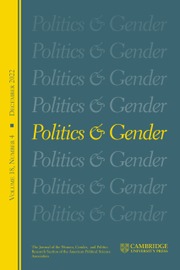No CrossRef data available.
Article contents
From Descriptive to Identity Representation: What If a Woman of Color Led the American Empire?
Published online by Cambridge University Press: 11 June 2025
Extract
At the 2024 US Democratic Convention, Kamala Harris presented her approach to the military in her speech accepting her historic nomination as the party’s candidate for the US presidency. In this essay, I reflect on the question: what would it mean if a woman of color led the American empire? I argue that scholars of gender, politics, and representation must turn their attention toward evaluating not just how gender conditions how politicians legislate, run their campaigns, or face barriers to winning office — but whether and to what extent politicians of any gender use their identities to combat the material suffering wrought by American imperialism. I echo calls for greater attention to power structures in the study of gender and representation (Brown et al. 2024) and argue that we must decenter “imperial feminism” and recenter tenets from Black and Third World feminism (Amos and Parmar 1984; Johnson-Odim 1991; Taylor 2017). To this end, I theorize a new type of representative that bridges these concerns: identity representatives.
Information
- Type
- Critical Perspectives Article
- Information
- Copyright
- © The Author(s), 2025. Published by Cambridge University Press on behalf of the Women, Gender, and Politics Research Section of the American Political Science Association
Footnotes
I thank Guillermo Caballero for his helpful feedback as I developed this essay.

